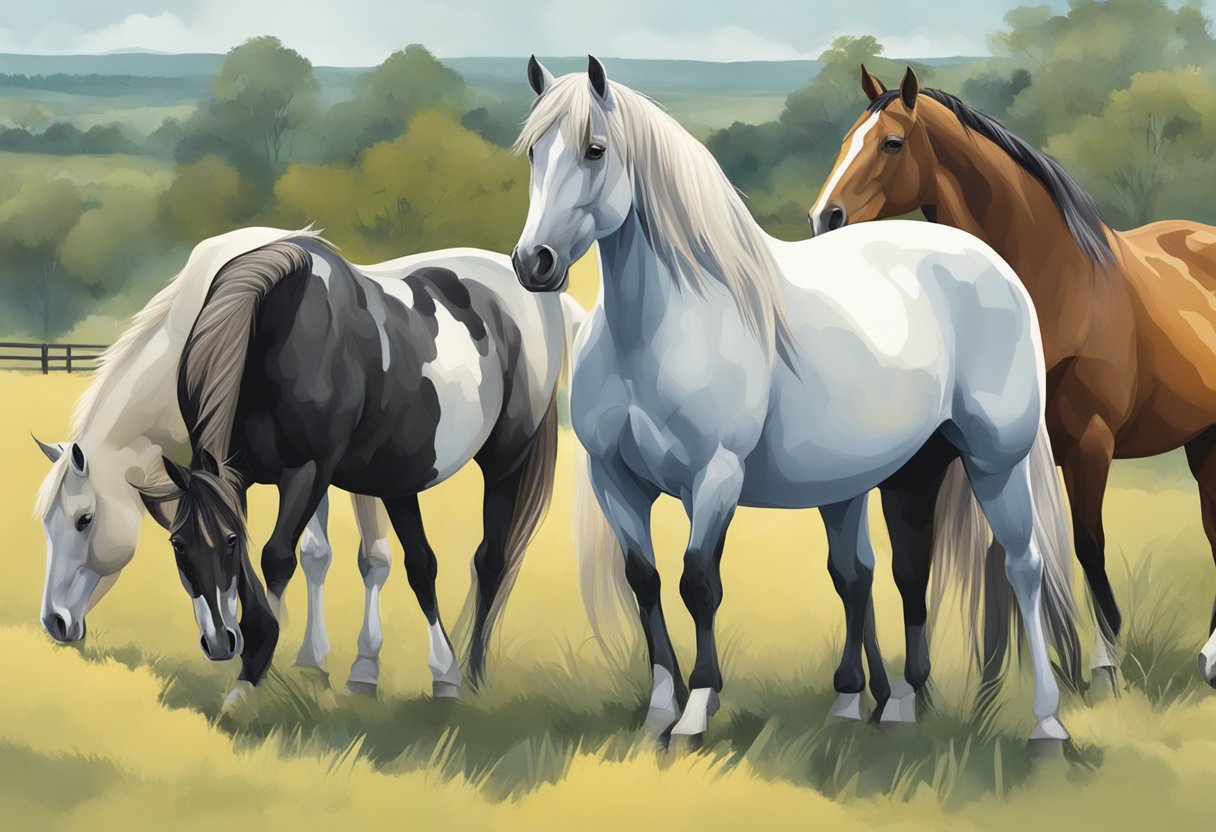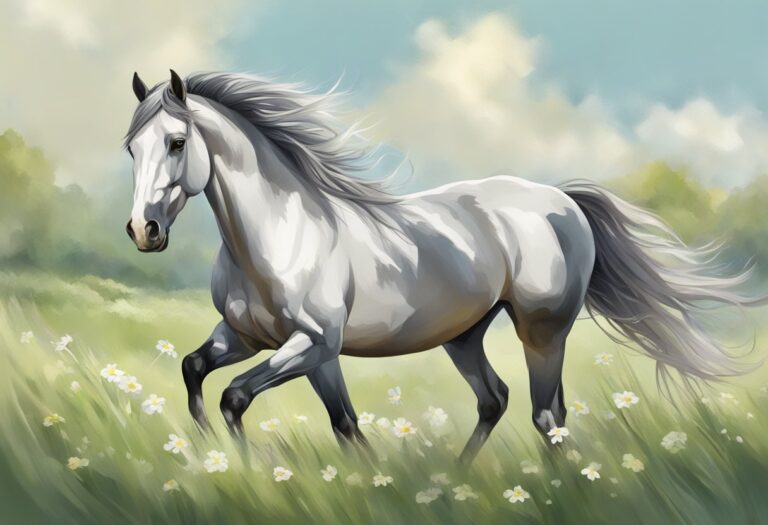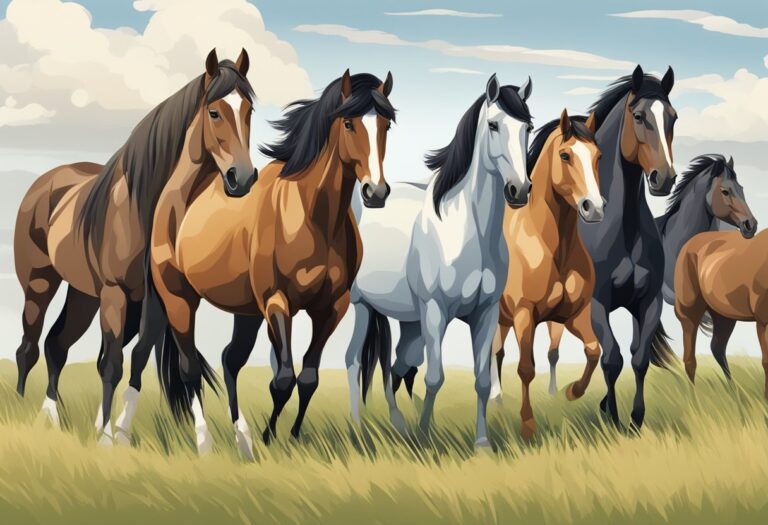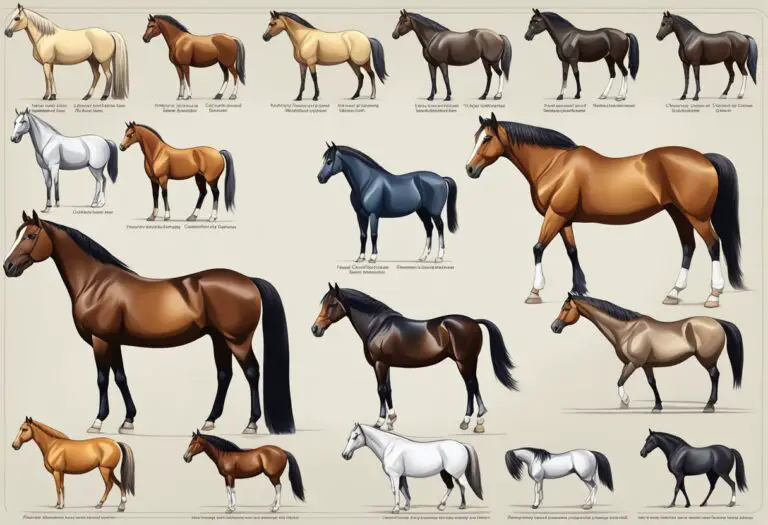Why Some Horse Breeds are Considered Rare?
Some horse breeds are considered rare due to a variety of factors. These factors can include their history, geographical location, and specific uses. Understanding the reasons behind why some breeds are rare can provide insight into the world of horse breeding and the importance of preserving these unique animals.
One reason why a horse breed may be considered rare is due to its history. Some breeds have a long and storied past, but over time, their popularity may have declined. This can be due to changes in fashion or trends, or because the breed was replaced by newer, more popular breeds. In some cases, natural disasters or wars may have also contributed to the decline of a breed’s population.
Another factor that can contribute to a horse breed’s rarity is its geographical location. Some breeds are only found in specific regions of the world, making them difficult to acquire or export. This can limit their popularity and availability, leading to a smaller population overall. Additionally, certain breeds may have been developed for specific uses in their native regions, which may not be as applicable or desirable in other parts of the world.
Defining Horse Rarity

When it comes to horse breeds, rarity is often determined by a combination of factors including breed characteristics and population statistics. In this section, we will explore these factors in more detail.
Breed Characteristics
One of the main factors that contribute to a horse breed’s rarity is its unique characteristics. These can include physical features such as coat color, height, and conformation, as well as temperament and abilities. For example, the Akhal-Teke breed is known for its distinctive metallic coat and endurance abilities, while the Falabella breed is known for its small size and docile temperament.
Population Statistics
Another important factor in determining a horse breed’s rarity is its population statistics. Some breeds may have a small population due to geographic isolation or historical events such as war or disease. Others may have a smaller population due to a lack of demand or popularity. For example, the Cleveland Bay breed has a small population due to a decline in demand for carriage horses, while the Marwari breed has a small population due to geographic isolation in India.
To better understand a breed’s rarity, population statistics such as the number of registered horses, breeding programs, and conservation efforts can be helpful. By tracking these statistics, breeders and enthusiasts can work to preserve and promote rare horse breeds for future generations.
Historical Factors Influencing Rarity

Selective Breeding Practices
One of the major factors contributing to the rarity of some horse breeds is selective breeding practices. For centuries, breeders have selectively bred horses for specific traits such as speed, strength, or endurance. This has led to the development of many unique horse breeds, each with their own distinct characteristics.
However, some breeds were not as popular as others, and over time, their numbers dwindled. This was often due to a lack of demand for these breeds, as well as the emergence of new breeds that were more popular. As a result, some breeds became rarer and more difficult to find.
Geographical Isolation
Another factor that has contributed to the rarity of some horse breeds is geographical isolation. In some cases, a breed may have originated in a specific region or country, and over time, became isolated from other breeds due to physical barriers such as mountains or oceans.
This isolation often resulted in the development of unique traits and characteristics that were not found in other breeds. However, it also meant that the breed was not able to interbreed with other breeds, which led to a limited gene pool and a higher risk of genetic disorders.
As a result, some of these isolated breeds became rarer over time, as they were not able to interbreed with other breeds and their numbers dwindled. Today, many of these breeds are considered rare and are protected by breed associations and conservation efforts.
Conservation Status of Rare Breeds

Endangered Species Lists
Many rare horse breeds are considered endangered and may be listed on various endangered species lists. The International Union for Conservation of Nature (IUCN) maintains a Red List of Threatened Species, which includes several horse breeds such as the Sorraia, the Marwari, and the Przewalski’s horse.
In addition, some countries maintain their own lists of endangered species, which may include rare horse breeds. For example, the United States Fish and Wildlife Service maintains a list of endangered and threatened species, which includes the Kiger Mustang and the Colonial Spanish Horse.
Preservation Efforts
Various organizations and individuals work to preserve rare horse breeds. One approach is through breeding programs that aim to maintain genetic diversity and prevent inbreeding. Many breed registries have established guidelines to help preserve rare breeds, such as requiring a certain percentage of purebred ancestry or prohibiting crossbreeding with other breeds.
Another approach is through education and outreach programs that aim to raise awareness about the importance of preserving rare breeds. These programs may include demonstrations, exhibitions, and workshops that showcase rare breeds and their unique characteristics.
Finally, some rare horse breeds have been successfully reintroduced into the wild through reintroduction programs. For example, the Przewalski’s horse, which was once extinct in the wild, has been successfully reintroduced into several nature reserves in Mongolia and China.
Overall, conservation efforts are critical for preserving rare horse breeds and ensuring their survival for future generations.
Human Impact on Horse Breeds

Agricultural Changes
The domestication of horses dates back to thousands of years ago, and humans have been selectively breeding horses for specific traits for centuries. However, with the advent of modern agriculture, many horse breeds lost their relevance and were no longer needed for farm work. As a result, many breeds became rare or even endangered.
Selective breeding for specific traits also led to the decline of some breeds. For example, the Thoroughbred was bred for speed and racing, which made it unsuitable for other purposes. This led to a decline in the number of Thoroughbreds used for other activities, leading to a decrease in their population.
Industrialization
The industrial revolution brought about a significant change in the way humans interacted with horses. With the rise of machines, horses were no longer needed for transportation or work, which led to a decline in the demand for certain breeds. Additionally, the use of horses in wars declined with the advent of modern warfare, further reducing the need for certain breeds.
The rise of mechanization also led to a decline in the number of people who were knowledgeable about horse breeding and husbandry. This led to a decrease in the number of breeders, which in turn led to a decrease in the number of horses.
In conclusion, human impact has played a significant role in the decline of certain horse breeds. Agricultural changes and industrialization have led to a decline in the demand for certain breeds, while selective breeding and a decrease in knowledgeable breeders have led to a decrease in the number of horses.
Genetic Factors and Diversity

Inbreeding and Genetic Bottlenecks
One of the main reasons why some horse breeds are considered rare is due to inbreeding and genetic bottlenecks. Inbreeding is the mating of closely related individuals, which can lead to a decrease in genetic diversity. This can result in a higher frequency of genetic disorders or diseases within a population. Genetic bottlenecks occur when a population undergoes a significant reduction in size, which can also lead to a decrease in genetic diversity.
Horse breeds that have experienced inbreeding or genetic bottlenecks may have a smaller gene pool, which can make it difficult to maintain genetic diversity. This can be particularly challenging for breeds that have a small population size or are geographically isolated.
Mutation and Evolution
Another factor that can contribute to the rarity of certain horse breeds is mutation and evolution. Mutations are changes in the DNA sequence that can occur spontaneously or as a result of environmental factors. Over time, mutations can accumulate and lead to the development of new traits or characteristics in a population.
Evolution refers to the process by which populations change over time in response to environmental pressures. This can result in the development of new species or subspecies. Horse breeds that have undergone significant evolutionary changes may be considered rare due to their unique characteristics or adaptations.
Overall, genetic factors and diversity play a crucial role in the rarity of certain horse breeds. Inbreeding, genetic bottlenecks, mutation, and evolution can all contribute to a decrease in genetic diversity and the development of unique traits or characteristics.
Economic and Social Influences

Cultural Significance
One reason why certain horse breeds are considered rare is due to cultural significance. In some countries or regions, certain breeds have a long history of being associated with royalty or nobility. These breeds may have been selectively bred for specific purposes, such as hunting or racing, and were often owned by the wealthy. As a result, these breeds may have become less common over time as the demand for them decreased.
Market Demand
Another factor that can contribute to a breed’s rarity is market demand. If a breed is not in high demand, breeders may be less likely to produce offspring. This can lead to a decline in the breed’s population over time. Additionally, if a breed is not well-known, it may be difficult to find buyers for the offspring, which can further decrease the breed’s population.
Market demand can also work in the opposite way. If a breed becomes popular, breeders may begin producing more offspring, which can lead to an increase in the breed’s population. However, this can also lead to overbreeding, which can have negative consequences for the breed’s health and genetic diversity.
Overall, economic and social influences can play a significant role in why certain horse breeds are considered rare. Cultural significance and market demand can both contribute to a breed’s rarity, and breeders and buyers should be aware of these factors when making decisions about which breeds to produce and purchase.
Challenges in Maintaining Breed Populations

Habitat Loss
One of the biggest challenges in maintaining breed populations is habitat loss. Many horse breeds are native to specific regions and require certain environmental conditions to thrive. As human populations continue to grow and expand into previously undeveloped areas, natural habitats are destroyed or altered, making it more difficult for these breeds to survive.
For example, the Camargue horse, a breed native to the wetlands of southern France, is at risk due to habitat loss caused by urbanization and agriculture. The breed’s population has declined significantly in recent years, and efforts are underway to protect its natural habitat and ensure its survival.
Financial Constraints
Another challenge in maintaining breed populations is financial constraints. Breeding and raising horses can be expensive, and many rare breeds do not have a large market demand. This makes it difficult for breeders to recoup their costs and incentivizes them to focus on more profitable breeds.
Additionally, rare breeds may require specialized care and management, which can further increase costs. For example, the Caspian horse, a rare breed native to Iran, requires a specific diet and climate to thrive. These factors make it difficult for breeders to maintain a viable population of the breed.
Overall, maintaining breed populations is a complex issue that requires careful management and conservation efforts. By addressing habitat loss and financial constraints, we can help ensure the survival of rare horse breeds for future generations.
The Role of Breed Registries

Breed registries play a crucial role in documenting and preserving horse breeds, as well as promoting them to potential breeders and buyers. In this section, we will explore the functions of breed registries in maintaining rare horse breeds.
Documentation and Standards
One of the primary roles of breed registries is to establish and maintain breed standards. These standards define the physical characteristics, temperament, and other traits that are desirable for a particular breed. By setting these standards, breed registries provide a clear and consistent definition of what makes a horse a member of a specific breed.
Breed registries also maintain pedigree records, which document the lineage of each registered horse. These records help to ensure that each horse meets the breed standards and is a true representative of the breed. Pedigree records can also be used to track genetic traits and identify potential health issues.
Breed Promotion
In addition to documenting and maintaining breed standards, breed registries also play a crucial role in promoting rare horse breeds. They provide resources for breeders and owners, such as breed-specific shows and competitions, as well as educational materials on breed history, care, and training.
Breed registries also work to increase public awareness of rare horse breeds through advertising and public relations efforts. By promoting the unique qualities and characteristics of rare breeds, breed registries can help to generate interest and demand among potential buyers.
Overall, breed registries play a vital role in preserving and promoting rare horse breeds. Through their efforts to document breed standards and promote breed awareness, they help to ensure that these unique and valuable breeds continue to thrive for generations to come.







